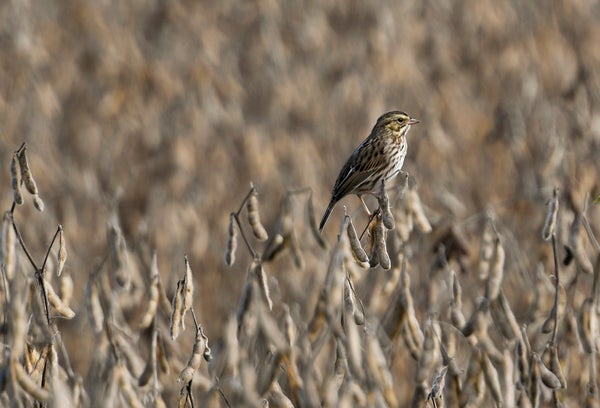CLIMATEWIRE | Millions of young birds die from extreme heat in farm fields across America in what researchers say is a growing threat from climate change that could affect avian populations.
The nestlings and chicks often perish from dehydration and the affects of thermoregulation, especially when they fledge in "open cup" nests and bird boxes located in unshaded fields, according to researchers at the University of California, Davis.
Their survival also depends on the ability of mating adults to forage for food and support the nest, both of which can be impeded by extreme temperatures.
On supporting science journalism
If you're enjoying this article, consider supporting our award-winning journalism by subscribing. By purchasing a subscription you are helping to ensure the future of impactful stories about the discoveries and ideas shaping our world today.
“We know that habitat conversion [for agriculture] is already affecting biodiversity and species health on farms,” Katherine Lauck, co-lead author of the paper and a Ph.D. candidate in ecology at UC Davis, said in an interview.
“When you combine that with extreme heat associated with climate change, it’s creating some unique conditions that birds did not evolve with,” Lauck added. "Fundamentally, this is about whether nestlings survive or not.
The findings, published Thursday in the journal Science, add to a growing body of research about the effects of climate change on birds that scientists say are indicators of ecological decline. In 2019, experts from seven major ornithological institutions and nonprofits estimated that North America’s breeding adult birds had declined by 30 percent since 1970, a loss of nearly 3 billion birds.
While the declines were caused by a variety of factors — including habitat loss, predation, food scarcity and building collisions — nestlings are increasingly jeopardized by climate change, the UC Davis researchers found.
They determined that in unshaded farm fields — where temperatures can be 10 degrees Celsius higher than in nearby forests — mating adults have “significantly diminish[ed] reproductive success” compared to those living in forest areas. Scientists define reproduction success as having at least one fledgling emerge from a nest per breeding season.
While heat stress affects birds across all habitat types, the researchers found that “common generalist” species like western bluebirds and tree swallows were particularly vulnerable to heat in rural America, with “significant declines in nesting success when temperatures spiked in agricultural areas.”
They also found that birds living in unshaded open-cup nests and bird boxes were more vulnerable to heat waves than those nesting in tree holes and more shaded areas. The trends were observed across every farming region of the country.
“This suggests that species already in decline may have an even greater difficulty rearing young in the future as heat waves become more common and more land is converted to agriculture,” Daniel Karp, an associate professor of biology at UC Davis who led the data collection effort, said in a statement.
The findings are based on an analysis of 152,000 nesting records collected by NestWatch, a program by the Cornell Laboratory of Ornithology in which local volunteers monitor nests and report signs of bird health and behavior using an online app. Data includes things like the number of eggs laid, adult nesting behaviors and the activities of baby birds.
The approach allowed researchers to assess 58 bird species in habitats such as farms, forests, grasslands and developed areas. The data spanned a 23-year period beginning in 1998.
Conor Taff, a research associate at the Cornell lab, said the UC Davis study is notable for its nationwide scale and provides a large data source for researchers who have traditionally focused on distinct regions. He also said the paper provides a foundation upon which scientists can study more species and the effects climate change is having on their habitats.
Reprinted from E&E News with permission from POLITICO, LLC. Copyright 2023. E&E News provides essential news for energy and environment professionals.
